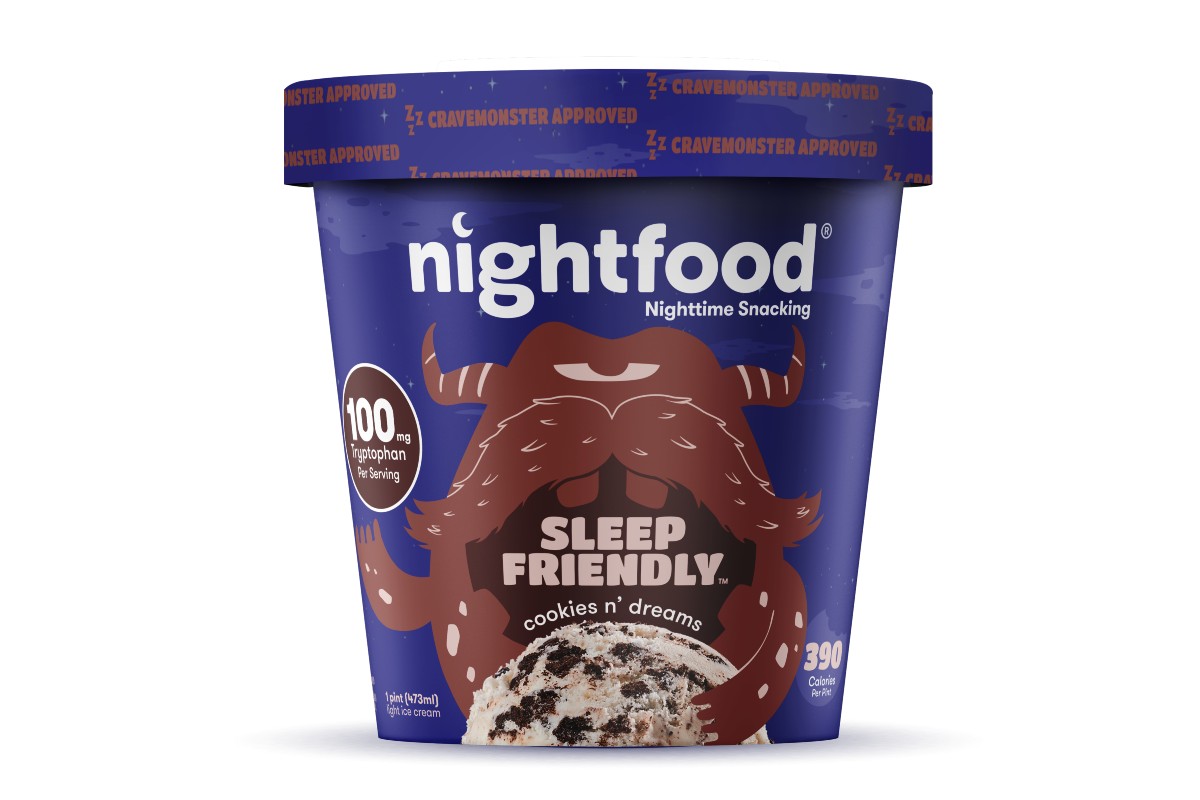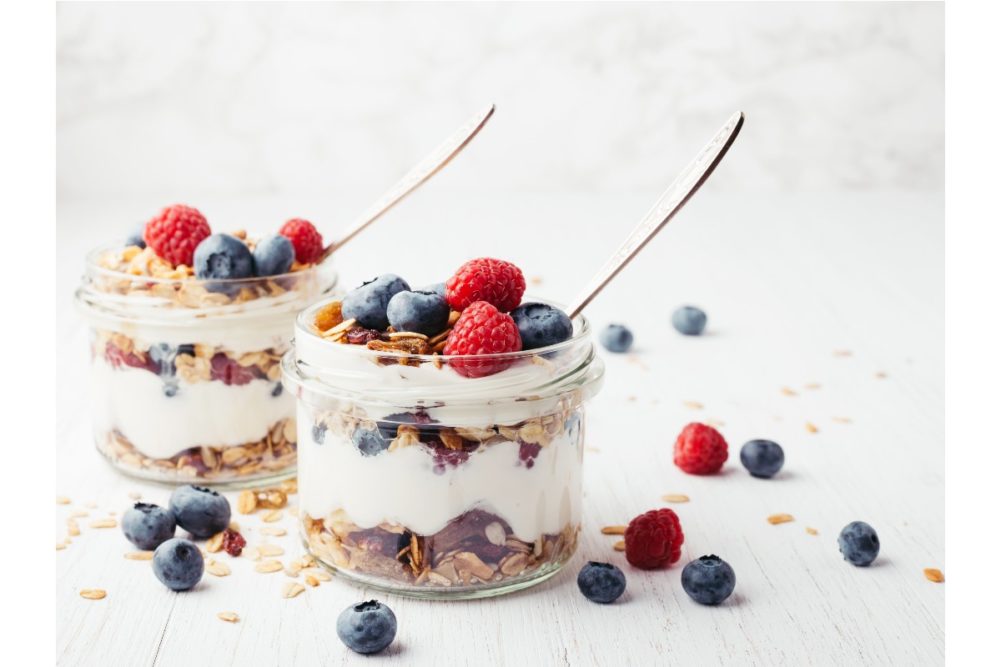Improving energy and having less fatigue are the most sought benefits from foods and beverages, according to the 2022 Food and Health Survey from the International Food Information Council (IFIC), Washington, DC.
More than a third of Americans (37%) said they are seeking out these benefits. Other top attributes sought include weight loss/management (30%), digestive/gut health (29%), heart/cardiovascular health (28%), improved sleep (26%) and immune function/health (25%).
Many of these benefits come from functional ingredients that started out in the supplement space and have made their way into food and beverage. This presents dairy foods processors the opportunity to formulate extra benefits into products consumers eat on a regular basis.
Toolbox of ingredients
The top-tier functional ingredients are fairly mainstream. The most common is caffeine, followed by superfoods such as blueberries and spinach, then electrolytes, antioxidants, probiotics and added protein, according to a survey of 2,000 internet users aged 18 or older conducted by Kantar Profiles/Mintel in December 2022.
Less-known nutrients gaining traction in functional food development include botanicals (think lavender for relaxation). Some botanicals are described as adaptogens, a class of non-toxic herbs, mushrooms and minerals known to boost the immune system and help the body fight off the effects of stress. These plant-based compounds have been used for centuries in Chinese and Ayurvedic healing traditions. Ginseng, for example, is said to regulate the body’s response to physical or mental stress.
Another class of botanicals is nootropics. This term has the Greek translation of “towards the mind” and refers to compounds that directly or indirectly influence cognitive brain function. Examples include ashwagandha, citicoline and green tea extract.
“While the functionality (of the top-tier ingredients) may be a known added benefit, they may not always be the intentional catalyst to consumption,” said Doug Resh, director, commercial marketing, T. Hasegawa USA, Cerritos, Calif. “Yet these subliminal added benefits can distinguish a brand from its competitors. This is a valuable status to secure, and it can come through education and efficacy grounded in scientific validity, but do not discount the impact of taste.”
Conversely, nascent functional ingredients, like prebiotics, melatonin or adaptogens, may be sought out for their benefits among their niche audiences, he added.
A number of fruit-based ingredients are gaining traction for their functional benefits. FutureCeuticals, Momence, Ill., for example, now offers an ingredient that contains 50% soluble and insoluble dietary fiber from upcycled apples, carrots, blueberries, cranberries and spinach. The ingredient delivers plant-based, intact dietary fiber and polyphenols to the gut. The fiber-bound polyphenols, once inside the gut, are released slowly and act as antioxidants to promote gut health.
Prune is a flavor of yogurt and drinkable yogurt that never caught on in the US, despite being very popular in Europe and Asia. Besides assisting with digestive health, one of the most compelling reasons to eat prunes is to increase bone density and stave off bone loss, according to Kate Leahy, spokesperson, Sunsweet Ingredients, Yuba City, Calif.
In October 2022, the American Journal of Clinical Nutrition released a study finding that postmenopausal women who ate 50 grams of prunes a day staved off bone loss. While the exact mechanism for how prunes impact bone density is not fully understood, researchers theorize that the combination of boron and other minerals in prunes, paired with anti-inflammatory and anti-oxidative properties, may suppress bone reabsorption at the cellular level.
“Many dairy products are positioned as being good sources of calcium for bone health,” said Leahy. “Prunes can also play a role in boosting bone health, so a prune yogurt or prune kefir product could provide an extra nutritional function for consumers.”
Postbiotics are a new category in the functional ingredient space. They do away with the need to add probiotics by being the healthy metabolites that the microbiome produce, the compounds that possess the actual health benefit. This includes an array of enzymes, peptides, organic acids, fatty acids and more. Cargill, Minneapolis, offers a postbiotic derived from the fermentation of baker’s yeast.
“As shown through our stability testing, our postbiotic is highly heat stable, can handle varying pH levels and offers up to a three-year shelf life,” said Jenna Nelson, channel lead-food and beverage, Cargill. “This stability is due in large part to its inanimate nature. There is no concern about the efficacy of the ingredient dying or being ‘killed off’ in processing.”
With all of these ingredients, proper dosing is necessary for the consumer to reap any purported benefits, which is why most applications are sold as individual servings in order to guarantee a specified amount of the compound. Beverages are the most common delivery vehicle, provided the ingredients properly dissolve and are dispersed into a homogenous fluid. Think ready-to-drink lattes, yogurt smoothies and breakfast shakes.
Drinking to wellness
According to the IFIC survey, wellness will continue to be top-of-mind for many consumers, but it will increasingly come in liquid form, driven in large part by consumers looking for added benefits like energy, mental health and gut health support.
The role of beverages continues to expand beyond hydration as consumers look to them to provide benefits they typically get from foods, according to the 2023 USA Trend Report: Shoppers’ Journey Towards Living & Eating Healthier from HealthFocus International, Des Plaines, Ill. Beverages have become the testing ground for delivering the latest health and wellness trends consumers are looking for.
“Health expectations are mounting; this is especially true for younger consumers,” said Cali Amos, director of human insights at HealthFocus. “Our data show that more than half (58%) of 18-to-29- year-olds strongly agree or agree that ‘beverages can provide the same nutrition as foods.’ That’s a notable difference when you compare it to the 47% in the next age bracket of 30 to 39, and the mere 18% with those over 65.”
According to Jenna Callahan, category manager, FFP, Lake Mary, Fla., in addition to seeking beverages that contain some form of functionality, today’s consumers are demanding healthy beverages with natural ingredients.
“Over the years, energy drinks that increase mental alertness and physical performance have been the most popular functional beverage,” Callahan said. “Now, consumers are looking for natural sources of caffeine or caffeine alternatives to meet their desires for health and wellness, and energy drink brands are turning to cleaner beverage formulations to fulfill these demands.”
FFP is rolling out a natural, high-potency caffeine ingredient that is labeled as green tea extract. It is standardized to 98% caffeine and comes with extra benefits.
“Natural and synthetic caffeine tend to be very similar but vary in their effects on the human body,” said Callahan. “Research shows that natural caffeine was found to have a longer lasting and more consistent effect on mood and mental cognition than synthetic caffeine. Green tea extract provides additional benefits such as reducing blood pressure, inflammatory biomarkers and oxidative stress. It has also been shown to improve skin health with reduced acne and skin aging.”
Van Drunen Farms, Momence, Ill., is rolling out a coffeeberry coffee fruit juice concentrate created from a patented process that concentrates the juice of upcycled coffee fruit. Not only is it a clean source of energy, the water-soluble ingredient has a multi-dimensional flavor profile that works well in energy-style beverages.
The opposite of getting energized is getting good sleep, something more than one out of four consumers surveyed by IFIC are looking for in their food and beverage choices.
Premier Protein, Emeryville, Calif., developed shelf-stable Good Night Nutrition Shakes formulated to “help support a healthy sleep routine.” The beverage comes in three serene flavors – Caramel Bliss, Cozy Cocoa and Dreamy Vanilla – and is made with a special milk protein peptide that has relaxing properties and helps promote a sense of calm. Instructions say to enjoy – hot or cold – 30 minutes before bedtime for a relaxing and soothing end to the day.
With solid applications, there’s always the possibility of uneven dispersion. Yet, it is easier to hide and mask any off flavors in solids. Single-serve cups of yogurt, dairy desserts and even frozen desserts all are viable concepts.
 Photo: Nightfood, Inc.
Photo: Nightfood, Inc.Another dairy product that addresses the area of sleep comes from Nightfood Inc., Tarrytown, NY. Some of the sleep-friendly attributes of Nightfood ice cream include more prebiotic fiber, casein protein, calcium, magnesium and zinc when compared to regular ice cream, as well as less sugar, less fat and fewer calories. These attributes are called out in detail on the back of each pint. The front panel is focused on communicating the brand’s unique point of differentiation and key consumer benefit.
“Nightfood was created specifically by our sleep experts with ingredients for better sleep,” said Sean Folkson, chief executive officer. “Today’s supermarket shopper is more rushed and distracted than ever. A brand needs to drive home one thing in the first millisecond the consumer sees that pack. Now our key benefit, captured in the phrase ‘Sleep-Friendly,’ is literally front and center on every pint of Nightfood.”
Opportunities for turmeric
Turmeric, a flowering plant of the ginger family, has long been used as a flavoring agent — namely in curries — as well as a natural food coloring agent. The primary functional compound in turmeric is curcumin, which gives turmeric its bright yellow color and qualifies it as an adaptogen.
Turmeric powder has long been blended with steamed milk and sweetened with honey or agave to make golden lattes. Other aromatic spices, such as cinnamon and ginger, may be added for flavor and further contribute to the beverage’s healthful halo. Black pepper is often included, as it has been shown to improve the body’s absorption of curcumin.
With the ready-to-drink coffee-milk category growing with flavors and functional benefits, golden lattes could present an opportunity for processors. Currently powdered mixes are available in the US for consumers to make at home. There are also ready-to-drink concepts made with plant-based milks.
Recent research presents another opportunity for curcumin in dairy foods formulations. Researchers at the Institute of Food Technology and Nutrition at the University of Rzeszow, Poland, have shown that a new, highly purified form of curcumin remained dissolved in probiotic yogurt without any negative impact on sensory attributes, while at the same assisting with extending shelf life. Their discovery, published in the April 2023 issue of Frontiers in Nutrition, suggests it may be possible to create a probiotic yogurt that contains no artificial preservatives but still has a long shelf life and potential health benefits.
“It is well known that curcumin has antimicrobial, anti-inflammatory and immune-boosting effects. However, it is insoluble in water, which is one of the main reasons why our bodies are not able to absorb sufficient amounts for it to have a biological effect,” said Dr. Magdalena Buniowska-Olejnik, professor and primary author of the study. “We wanted to see if it was possible to create a dairy product containing curcumin in a bioavailable form that would also appeal to the consumer.”
Results showed that the water-dispersible extract sample was better at inhibiting the growth of yeast, fungi and bacteria than the standard turmeric extract in probiotic yogurt. At the same time, it maintained the recommended levels of the “good” lactic acid bacteria that are contained in fermented, live yogurts.
“Yogurt containing the standard turmeric extract was slightly better at remaining in a homogenous form without a layer of water developing on the top,” said Dr. Buniowska-Olejnik. “However, it tasted bitter and the taste deteriorated after the first week of storage in the fridge, so it did not appeal to the tasting panel.”
The inclusion of curcumin in probiotic yogurt provides consumers with an easy way to reap the benefits of the microorganisms and the planet-derived antioxidant. The researchers plan to explore the effects of curcumin in other dairy products, especially those where its anti-microbial properties can extend the shelf life of products.

